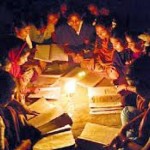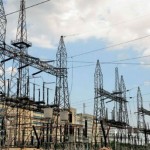Power cuts have been enforced in Greater Hyderabad for two hours in two different spells since March 1 this year. The Central Power Distribution Company Limited (CPDCL) subsequently decided to increase the number of hours to four, because demand exceeded supply. The amount of power needed went upto 40 MU on 4 march ’13.
The beginning of summer has led to the demand for power going upto 303 million units, but the state could increase production and purchase 246 million units only. AP came to be known as the state with worst power shortage at 57 million units as on 6 March ’13.
 Despite AP has gas-based, thermal and hydel plants, they have not been functional to generate adequate electricity throughout the year. Additional power generation has not been possible because of different reasons. Let us discuss here briefly the factors affecting gas-based, thermal and hydel power generation.
Despite AP has gas-based, thermal and hydel plants, they have not been functional to generate adequate electricity throughout the year. Additional power generation has not been possible because of different reasons. Let us discuss here briefly the factors affecting gas-based, thermal and hydel power generation.
Gas-based power plants
The recent shutting of the six privately owned gas based plants was because of Reliance Industries Limited (RIL) at KG Basin stopped supplying gas. Until recently, RIL was supplying three million square cubic metres of gas per day to these plants. With the stoppage, AP lost 700 mega watt (MW). This amount of power was being generated by four gas-based power companies, including GMR, GVK, Gauthami-2 and Konaseema extension.

Spectrum and Jegrupadu extension, the other units generate some quantity of power using low supplies of gas.
Thermal power plants
Of late, the thermal power stations have been showing technical problems frequently. For example, on 5 March ’13, the Kakatiya Thermal Power Station in Bhoopalapally, Warangal district had problems, and on 6 March ’13 the Simhadri Thermal Power Station, Visakhapatnam had a technical issue leading to closure and loss of 500 MW.
Hydel power plants
Also, hydel power generation has suffered because of lack of water in reservoirs. There is no inflow into Srisailam and Nagarjunasagar reservoirs and power generation has become zero. Still worse, the water stored at a lower level has been taken to be supplied as drinking water to the districts of Nalgonda, Khammam and Guntur.
